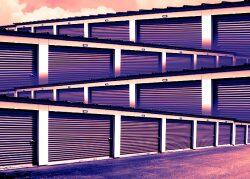The tri-state area’s industrial real estate market remained busy in the first quarter, but a slowdown in investment sales could be on the horizon as economic headwinds loom.
Industrial real estate investment volume rose by 31 percent year-over-year to $1.8 billion, according to a report issued by CBRE. This followed a record-setting fourth quarter of 2021, during which investment volume doubled year-over-year to $5.2 billion and nearly a third of the year’s transactions were completed.
The tri-state area had a record $10.6 billion in industrial real estate deals last year, a 64 percent increase from the previous year, according to the commercial real estate firm.
Industrial real estate was the third-largest sector for tri-state investment volume last year behind the multifamily and office markets ($17.1 billion and $15 billion, respectively). The industrial market had the third-largest year-over-year increase in investment volume at 57 percent, behind the office and hotel sectors, according to the report.
The most active region for industrial real estate investment was New Jersey with $5.2 billion in sales. In the past two years, the state has accounted for as much as two-thirds of the region’s industrial square footage sold, according to CBRE.
New York City had almost $3.6 billion in industrial real estate investment volume last year, with Queens experiencing a nearly 50 percent year-over-year increase to nearly $1.5 billion.
The Hudson Valley saw the largest year-over-year increase in investment volume at 170 percent, followed by Long Island’s 77 percent jump.
While the average price per square foot rose steadily in all suburban markets in 2021, New York City had the highest in the region at approximately $595 — no surprise, given its high concentration of last-mile customers, high real estate costs and paucity of industrial space. Developers such as Andrew Chung have compensated by planning multi-level warehouses.
However, the industrial sector’s momentum could be sapped by rising inflation and interest rates, a downturn in leasing by e-commerce companies and limited opportunities to buy, according to CBRE.
Still, the report forecasts only a 1 percent decrease in U.S. industrial investment this year from last year’s record numbers, citing the strength and fundamentals of the overall market and its likelihood to continue expanding. However, investors are expected to be more cautious than in previous years given economic uncertainty, according to the analysis.
Perhaps the most significant impact on the tri-state industrial real estate market could be a rise in cap rates, which have compressed in recent years because of low vacancy and historic absorption numbers. The average cap rate reached a record-low 4.4 percent last year, with New York City having the region’s lowest at just 3.9 percent, according to CBRE.
Read more


Industrial cap rates could rise by as much as 30 basis points in the latter half of this year and early 2023, according to the report. A recession could further slow leasing and rent growth, which would put more upward pressure on cap rates.
A potential cooling of the tri-state industrial real estate market comes as the region experiences extremely-low inventory and rising rent costs for warehouse space. Only 2.5 percent of Northern New Jersey industrial space was vacant as rent rose year-over-year by 16 percent in the first quarter, according to a report last month by the commercial real estate firm Savills. Northern New Jersey had the least available space and the highest annual rent increases nationwide at the end of last year.
The New York, New Jersey and Connecticut industrial market is emblematic of warehouse space becoming more expensive and difficult to find nationally. U.S. industrial market vacancy plummeted to a 27-year-low of 4.2 percent while asking rents for industrial real estate nationwide rose year-over-year by almost 9 percent last quarter, according to Savills.
Logistics inventory dropped to historic lows in the quarter, according to Prologis, with the remaining space on pace to run out in 16 months if no other facilities became available.
Industry leaders have attributed the spike in industrial real estate to consumers’ buying more products online and internet retailers’ efforts to deliver orders ever faster. Many industrial projects are now pre-leased before even being built.
In response to rising rents, some e-commerce distribution companies, including Amazon, pivoted from leasing to purchasing facilities. The tech giant doubled its real estate holdings last year, expanding its owned portfolio to 16.7 million square feet across North America.
But e-commerce sales have slowed in recent quarters since peaking earlier in the pandemic and Amazon said last month that it was halting warehouse deals after spending billions in recent years to double its portfolio of fulfillment and distribution centers.
Amazon said that excess industrial space cost the company about $2 billion in the first quarter. The company is also looking to sublet at least 10 million square feet, which is roughly 5 percent of the space it snapped up in the past two years.
The retail giant’s reversal sent a chill through the industrial market, signaling an end to a frenzy of leasing and construction unlike any seen in decades.
